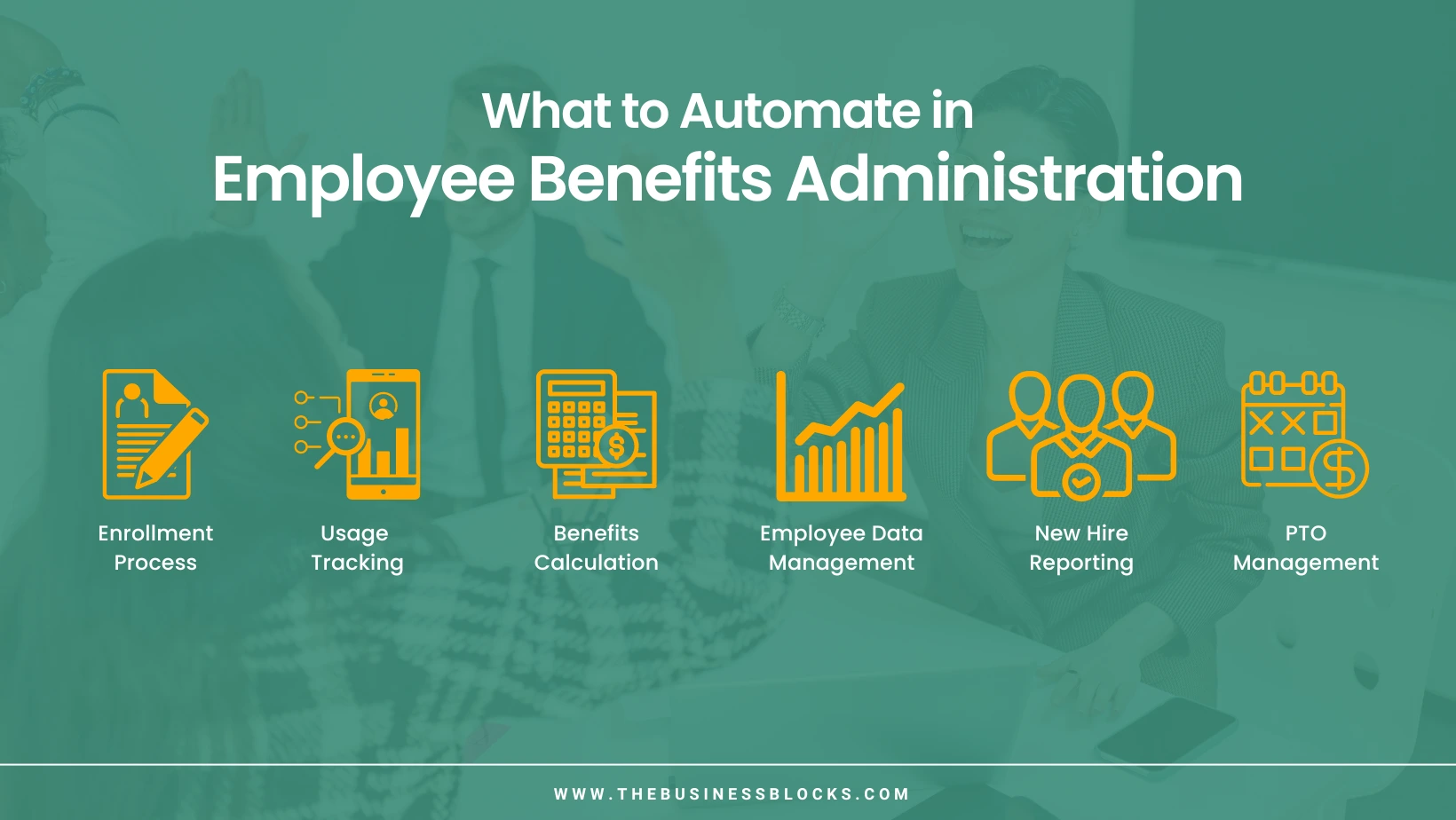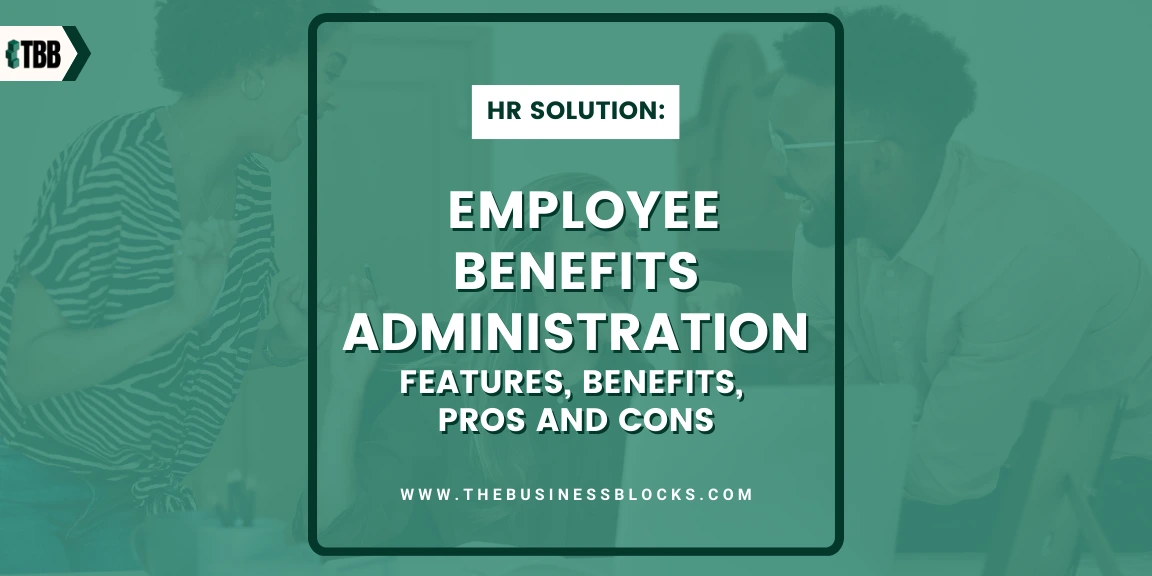A benefits administration software is a software utility that enables employers to manage and administer their organizations’ employee benefits.
These tools can aid companies in streamlining processes such as assessing employee benefits packages, creating benefits packages, enrolling employees into benefits plans, tracking eligibility and availability, and tracking distribution management.
HR managers or specific staff have the role of administering employee benefits packages.
This software may also include tools and means for communications, health insurance plans, messaging, and voluntary benefits program enrolment. The use of benefits administration delivery tools can assist companies in automating tasks about benefits and even allow the deployment of self-service portals.
Admittedly, benefits management and administration is a complicated domain in HR and involves many facets concerning employee and employer relationships.
This is where benefits administration can be useful, as these tools can help organizations streamline the benefits administration process through automation tools.
Management of employee benefits could be expensive. It is a time-consuming facet and necessitates a lot of logistical considerations.
What features are essential when selecting a business’s apt benefits administration software?

A competitive salary package and attractive benefits programs may help businesses attract new hires, retain talent, and help alleviate worries and employees’ anxiety during difficult times, just like what has been experienced during the worst times of the COVID-19 pandemic.
What administration software are you using?
We review 8 benefits administration (BA) services that can help with other HR tasks.
Benefits administrators and human resources personnel can be fully empowered through the use of intuitive benefits management software to easily identify, manage and track the usage of benefits and amenities they offer in an organization.
An effectively managed benefits program may solve issues with staff and resources. Having functionally rich and easy-to-use software could help employers and employees maximize the use of HR tools and benefits.
Standalone Benefits Administration Software
Several options are available when choosing an organization’s ideal benefits administration software. Some HRIS platforms already come with built-in benefits administration features.
A standalone and customizable software might be the perfect solution for those with bespoke requirements. Some utilities are cloud-based, while the rest are implemented on-premise.
The following are the essential features that should be supported by the tool that an organization will choose to employ.
Feature 1: Payroll Processing and Integration
The process of calculating and distributing wages, salaries, and all matters compensation to employees, which typically involves calculating the total amount of pay due to each employee, is an arduous and complicated task where a lot of factors come into play, such as the number of hours worked, overtime, deductions, among others.
Payroll processing is an important function and should be done accurately and promptly. This may also entail other compliance tasks, such as preparing and filing necessary tax return documents and unemployment insurance reports.
A good benefits administration tool includes compliance management, employee self-service, and business intelligence tools. These benefits administration systems can process automatic payroll deductions, management, and employee welfare programs as standard.
Implementing payroll with manual workflows or limited software might pose a risk for the business and lead to delays or issues with the amount employees will receive. It could even lead to penalties from labor governing bodies.
When a system where payroll is seamlessly integrated with benefits management, an organization may benefit immensely with gains such as efficiency, accuracy, and accessibility.
Manual processes can be avoided or eliminated when payroll and benefits are automated through software, and increased administrative efficiency can be achieved. Benefits administrators and HR personnel could then focus on other important tasks, saving resourcing and time.
Another benefit of having a seamless ecosystem of HR tools can ensure that information, sensitive information at that, can be transferred easily, securely, and accurately. There will be no manual input, and input and data errors can easily be avoided.
Finally, data stored and processed in this software can be easily accessed and analyzed.
Knowing that data integrity is maintained and preserved could assure that everything is properly handled and processed. Other functions reliant on these processes and data, such as tax reporting, can be readily done.
Feature 2: Workflow Management

One key component of an effective process of administering and managing employee benefits is having a comprehensive and complete record of employee and HR data.
In addition, the HR partners of an organization should be fully aware of all the laws and policies needed for compliance and ensure that all necessary processes are documented and supported by workflows that are implemented and observed by all parties involved.
Key deliverables, accountable parties, and a detailed workflow need to be defined and communicated with all stakeholders to achieve the intended results. Meticulous planning and implementation are needed due to the complexities and numerous aspects governing benefits administration.
Employee data, all changes to the life and profile of an employee, and usage of benefits are all part and parcel of this process.
The use of HR automated tools helps to foster organizational efficiency, productivity, communication, and transparency.
Feature 3: Compliance
Regulatory policies and laws constitute one hurdle that benefits administrators should always consider. Legislation that concerns labor and employment, such as HIPPA, COBRA, and FMLA, are a few of the bylaws that should be consulted and referred to when determining what is due for an employee.
These regulations help determine what labor laws and requirements should be fulfilled for an organization to comply.
With the help of a benefits administrator and a digital tool for benefits delivery, a company can be assured of accurate response and delivery of employee benefits and compliance with all laws and policies.
Feature 4: Automation in Administration
By implementing and using a benefits delivery solution, the platform’s automation capabilities can be fully utilized to avoid manual work that is prone to errors and issues. Considering and handing individual employee details and enrollment to insurance and medical benefits will not be necessary.
Complicated calculations and considering specific laws and policies can be automatically handled. Reporting and analytics features are also usually included in these benefits programs to aid HR professionals in analyzing performance and determining the needs of employees and their needs.
Implementing and using these benefits solutions provide a functionally rich utility that aids organizations in achieving and attaining efficiencies and productivity. When automated tools are used and maximized to their full potential, adapting the business’ specific needs, the mundane, repetitive, or complex tasks can be easily done with the required precision and accuracy that ensures that everyone involved and affected by the processes will be satisfied.
This also allows an organization to divert and focus its efforts and time on other important tasks.
Feature 5: Integrations for Scaling Up and Building a Digital Ecosystem
Regarding benefits, integration is essential because connectivity with third-party systems, vendors, and providers will often be needed. Connectivity with these systems is essential for the companies to provide a seamless and complete benefits delivery to the employees.
One useful application for this is when applications and enrolments need to be submitted or forwarded to carriers and service providers. There, it is imperative to consider supported integrations and the presence of APIs in the platforms when choosing which benefits administration software is best for a company.
Acquiring new services and providers and data migration, combination, conversion, and transfer of data might also be needed to implement new software. The existing technology stack of a company is also part of what should be considered.
When all the essential requirements are considered during the procurement of the benefits management platform, the company can be assured that all the necessary features can provide the functions demanded by the business requirements.
What should be automated in employee benefits administration?

A company’s HR department handles many tasks, especially administrative tasks and all activities concerning employees, from recruiting, onboarding, training, managing health insurance and care, employee benefits, and offboarding.
Some of these repetitive tasks may involve working with many benefits administration software and software, several vendors and providers, and probably many forms and tons of paperwork.
Using benefits administration software can help organizations automate some, if not all, of these tasks. Some of the tasks that can be automated, according to EverythingBenefits.com, are:
Enrollment Process
Automating enrollment processes eliminates repetitive actions and tasks and ensures that each enrollment activity will be done correctly, swiftly, and efficiently. Submission of the enrollment data can also be done automatically through integrations.
Usage Tracking
Having the means to track the availability and usage of benefits can benefit both the employer and employee by allowing the easy perusal of what benefits are still available and providing employers with the means to gauge usage and determine what benefits are preferred by the staff.
Benefits Calculation
If done automatically through a platform, anything that involves calculation can eliminate human errors, allow faster results generation, and ensure accuracy.
Employee Data Management
Maintaining a digital solution to record and manage data ensures a safe, secure, and central repository. With this, capturing and editing of information can be easily performed. Generating reports and obtaining important information can be facilitated.
New Hire Reporting
Automating recruiting and the hiring process can save a lot of time and ensure that all the essential tasks can be done, such as submitting requirements and documents and providing all important information that a new hire should know about. Line managers and
HR personnel can also be reminded of key dates and tasks that can ensure that a proper and efficient onboarding will be done.
PTO Management
Regarding PTO management, having a benefits administration system where application, tracking, and approval functions are present will remove this process from HR. It will instead empower the employees and managers to manage time off and leaves themselves.
How can benefits administration software elevate a company’s HR team?
Time-Saver
When manual processes, tasks, and form-filling are eliminated, HR partners and employees benefit. Employees can access benefits data through online accounts, portals, and self-service facilities. Automated benefits administration software can also facilitate time-off applications, benefits, and reimbursement options without needing a benefits administrator to focus on these requests.
Error Elimination
With the use of benefits administration software, the possibility of human errors due to issues with data capture and manual calculation is minimized. These tools also assure the organizations that the data and forms are securely stored and can be recovered and accessed at any time.
Convenience
With digital transformation and implementation, most benefits management activities can be done on-site or remotely, providing a convenient way of administering and managing employee benefits. Paperwork and other infrastructure associated with obsolete means of doing things can be avoided.
The availability of data, portals, and functions through mobile sites and smartphones also makes things easy for employees to use their benefits. This enhances the employee’s experience, especially if the benefits administration software is easy to use and navigate.
Compliance
Most of the time, conforming to laws, policies, and the huge number of government regulations that govern benefits are handled automatically in this benefits administration software, giving proper guidance for employees and HR practitioners in ensuring that everything is done in compliance with the company and government policies.
Visit our post on The Top Benefits Administration Software to learn more about benefits administration products.
What factors should be considered for selecting the best benefits administration software for a company?

When implementing HR automated solutions such as benefits administration, the processes involving benefits management would not only be simplified but can also be streamlined and automated.
The growth of the company and plans to scale should also be considered because this directly affects and influences recruitment, employee engagement, and retention.
HR partners should also consider the processes these platforms should cater to and the relationships that need to be considered, such as vendors and brokers.
The company should also evaluate data integration capabilities and functions the platform should support so that all employee benefits can be done via the platform.
If an organization is already using an HRIS platform with a built-in benefits administration, it could be an advantage, provided that the module can fully support all the benefits management requirements of the company.
Otherwise, choosing the best benefits administration as a standalone platform can be done if this software can be integrated with the company’s existing technology stack.
Are there Disadvantages to using Benefits Administration Software?
List of Cons in Implementing Benefits Administration Software:
Learning how to use this software and roll it out in an organization might take time.
Subscribing to a service or purchasing a platform might be too costly.
The functions could be too specialized, especially when considering the geological location and laws that govern the area and country where a company is located.
Having a workplace setup where employees are located in different parts of the globe could be challenging because each location’s laws and policies should be considered.
The Wrap
Benefits administration is a very important aspect of running a business, especially since this affects the workforce directly, and using software to manage and administer benefits will greatly impact an organization.
When evaluating and choosing the perfect employee benefits software for a company, many factors come into play. What is important is the needs and experiences of both the employees and HR partners should be front and center when determining what platform will be utilized.

